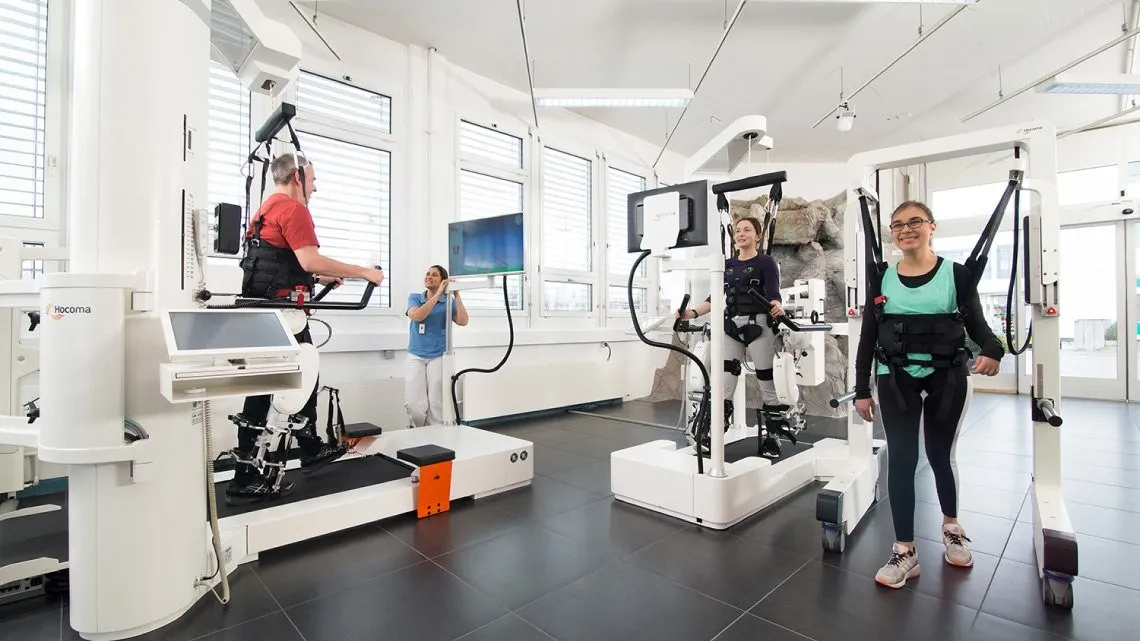
Rehabilitation therapy is a dynamic and evolving field that encompasses a wide range of techniques and approaches to help individuals recover from injury, illness, or disability. From traditional physical therapy to innovative virtual reality therapy, the world of rehabilitation therapy is constantly expanding with new methods and technologies. Understanding the basics of rehabilitation therapy, such as its history, principles, and benefits, is crucial for anyone interested in this field. Moreover, exploring the different types of rehabilitation therapy techniques, including physical, occupational, and speech therapy, offers valuable insights into the diverse ways in which individuals can regain their independence and improve their quality of life. As technology continues to play a significant role in rehabilitation therapy, it's essential to examine the use of wearable devices, telemedicine, and advancements in therapy equipment. Additionally, taking a holistic approach by incorporating mind-body, nutritional, and spiritual therapy can further enhance the effectiveness of rehabilitation programs. With the challenges and solutions in rehabilitation therapy, as well as the evaluation of its effectiveness and future trends, there is much to explore and discover in this exciting and impactful field.

Rehabilitation therapy has a rich history dating back to ancient civilizations, where various techniques were used to help individuals recover from injuries and disabilities. Over time, rehabilitation therapy has evolved into a comprehensive approach that addresses physical, emotional, and cognitive impairments. Understanding the history of rehabilitation therapy provides insight into its development and the principles that guide its practice today.
The principles of rehabilitation therapy are based on the concept of maximizing an individual's potential for recovery and independence. This involves assessing a person's specific needs, setting achievable goals, and implementing tailored interventions to optimize their functioning. The core principles include promoting mobility, enhancing communication skills, improving cognitive abilities, managing pain effectively, and supporting psychological well-being. By adhering to these fundamental principles, rehabilitation therapists can create personalized treatment plans that address each patient's unique challenges.
The benefits of rehabilitation therapy extend beyond physical recovery; they also encompass social integration and overall quality of life improvements. For patients recovering from injuries or surgeries or living with chronic conditions such as arthritis or stroke-related disabilities, participating in rehabilitative programs can significantly enhance their ability to perform daily activities independently. Moreover, addressing emotional and mental health concerns alongside physical limitations through counselling services or group support sessions within therapy settings will contribute positively towards holistic wellness.
Physical therapy focuses on improving a patient's physical function and mobility. This type of rehabilitation therapy involves exercises, stretches, and other techniques to help patients regain strength and flexibility after an injury or illness. Physical therapists also use modalities such as heat, cold, ultrasound, and electrical stimulation to manage pain and promote healing.
Occupational therapy is aimed at helping individuals develop or recover the skills needed for daily living and working. Occupational therapists work with patients to improve their ability to perform tasks such as eating, dressing, writing, cooking, driving, and working. They may also provide adaptive equipment and environmental modifications to assist in these activities.
Speech therapy addresses communication disorders that affect speech production or language comprehension. Speech-language pathologists help patients improve their speaking abilities through exercises targeting articulation, fluency, voice quality, and resonance. They also work on language skills such as vocabulary development, grammar usage, reading comprehension, and social communication.

One innovative approach in rehabilitation therapy is virtual reality therapy, which involves the use of computer technology to create a simulated environment. This form of therapy can help patients with physical and cognitive disabilities by engaging them in immersive experiences that promote movement and cognitive function.
Aquatic therapy is another unique technique used in rehabilitation, where patients perform exercises and activities in a water-based environment. The buoyancy of water reduces the impact on joints and muscles, making it an effective option for individuals recovering from injuries or surgeries. Additionally, the resistance provided by water helps improve strength and mobility.
Robot-assisted therapy is also gaining popularity as a cutting-edge method of rehabilitation. This approach uses robotic devices to aid patients in performing repetitive movements and tasks, helping to restore motor functions and improve coordination. These advanced technologies are revolutionizing the field of rehabilitation therapy, offering new opportunities for enhancing patient outcomes.
Technology has played a significant role in the advancement of rehabilitation therapy. wearable devices, such as activity trackers and motion sensors, have enabled therapists to monitor patients' progress outside of traditional therapy sessions. These devices provide valuable data that help therapists tailor treatment plans to meet individual needs and track improvements over time.
Telemedicine has also revolutionized the way therapy is delivered, allowing for remote consultations and monitoring. This technology has been especially beneficial for individuals who may have limited access to in-person therapy or live in rural areas. Through telemedicine, patients can receive ongoing support from their therapists without the need for frequent travel or long commutes.
In addition to wearable devices and telemedicine, advancements in therapy equipment have further enhanced rehabilitation outcomes. Innovative tools such as robotic exoskeletons and virtual reality systems offer new ways to engage patients in their recovery process. These technologies not only provide novel therapeutic opportunities but also promote increased motivation and engagement among patients.

In rehabilitation therapy, a holistic approach is essential as it focuses on treating the whole person rather than just the symptoms. This means integrating mind-body therapy, nutritional therapy, and spiritual therapy into the treatment plan. Mind-body therapy aims to address psychological factors that may be contributing to physical ailments, while nutritional therapy focuses on providing the body with the necessary nutrients for healing. Spiritual therapy can provide a sense of purpose and meaning for individuals going through rehabilitation.
Mind-body therapies such as yoga, meditation, and tai chi are often incorporated into rehabilitation programs to help patients manage stress, reduce anxiety, and improve their overall well-being. Nutritional therapists work with patients to develop personalized meal plans that support their recovery and promote optimal health. Additionally, they educate patients about the importance of nutrition in healing and offer guidance on making healthier food choices.
For many individuals undergoing rehabilitation therapy, spiritual support can be a source of comfort and strength. Whether through prayer or meditation practices, spiritual therapists aim to help patients find inner peace and resilience during their journey towards recovery. By embracing a holistic approach to rehabilitation therapy that encompasses mind-body, nutritional, and spiritual aspects of care, individuals can experience comprehensive support for their physical and emotional well-being.
One of the main challenges in rehabilitation therapy is overcoming patient resistance. Some patients may be hesitant to engage in therapy due to fear, discomfort, or lack of motivation. To address this issue, therapists need to build trust with their patients, understand their concerns, and provide a supportive environment for them to feel comfortable and motivated to participate in their rehabilitation.
Another significant challenge is addressing financial barriers that can prevent individuals from accessing necessary rehabilitation therapy. Many people may not have adequate insurance coverage or financial resources to afford regular therapy sessions. In response, therapists can work with patients to explore alternative payment options, seek out community resources for assistance, or advocate for policy changes that improve access to affordable rehabilitation services.
Implementing personalized therapy plans tailored to each individual's specific needs can also pose a challenge in rehabilitation therapy. Therapists must conduct thorough assessments, collaborate with other healthcare professionals when necessary, and continuously reassess and adjust treatment plans as needed based on the patient's progress and changing needs throughout the rehabilitation process.
Pediatric rehabilitation focuses on providing therapy to children with developmental delays, injuries, or disabilities. The goal is to improve their motor skills, cognitive abilities, and overall independence through various therapeutic interventions tailored to their specific needs.
Geriatric rehabilitation aims to address the physical and cognitive changes that come with aging. It involves helping older adults regain mobility, manage chronic conditions, and enhance their quality of life. The focus is on improving balance, strength, flexibility, and functional abilities in daily activities.
Athletic rehabilitation caters to athletes recovering from sports-related injuries or surgeries. It involves a combination of manual therapy techniques, exercise programs, and sport-specific training to help athletes return to their pre-injury level of performance safely and effectively.
In rehabilitation therapy, it is crucial to regularly evaluate the effectiveness of treatment to measure patient progress and assess therapy outcomes. This involves tracking changes in physical function, pain levels, and overall well-being to determine if the therapy is producing positive results for the patient.
Another important aspect of evaluating rehabilitation therapy is considering the various factors that may influence its success. These can include the patient's motivation and compliance with treatment plans, as well as any underlying medical conditions or environmental factors that may impact their ability to participate fully in therapy.
By systematically evaluating these different aspects, therapists can gain a clearer understanding of how effective rehabilitation therapy is for each patient and make adjustments as needed to ensure they are receiving optimal care.

One of the future trends in rehabilitation therapy is the integration of artificial intelligence (AI) into therapy programs. AI can help analyze patient data, provide real-time feedback, and even assist with creating personalized treatment plans. This innovation has the potential to significantly enhance the effectiveness and efficiency of rehabilitation therapy.
Another trend to watch for is the advancement of genomic therapy in rehabilitation. Genomic research is leading to a better understanding of how genetics influence an individual's response to certain therapies. As this knowledge grows, it will enable healthcare professionals to tailor rehabilitation programs based on a person’s genetic makeup, ultimately improving outcomes for patients.
Personalized rehabilitation programs are also expected to become more common in the future. With advancements in technology and medicine, therapists are increasingly able to develop customized treatment plans that address each patient's specific needs and goals. This tailored approach can lead to better results and higher patient satisfaction.
At Prime Chiro, we understand the importance of finding the best chiropractor near you in Lansvale NSW and nearby areas of Fairfield, Liverpool, and Cabramatta. Our expert team is dedicated to providing top-notch chiropractic care and consultation services to individuals in need. Whether you're suffering from back pain, neck pain, or any other musculoskeletal issues, we are here to help you find relief and improve your overall well-being. Contact us today to schedule a consultation and take the first step towards a healthier, pain-free life.
Rehabilitation therapy is a type of treatment that helps individuals recover from injuries, illnesses, or surgeries. It focuses on improving physical, mental, and emotional well-being through various techniques and exercises.
Rehabilitation therapy utilizes a range of techniques such as physical therapy, occupational therapy, speech therapy, and recreational therapy. These techniques are tailored to meet the specific needs of each individual.
Physical therapy is a key component of rehabilitation therapy. It involves exercises, stretches, and manual techniques to improve strength, flexibility, and mobility. Physical therapy helps individuals regain their independence and functionality.
Occupational therapy focuses on helping individuals regain the skills needed for daily activities, such as dressing, eating, and bathing. It aims to improve their ability to perform tasks and participate in meaningful activities.
Speech therapy helps individuals with communication and swallowing difficulties. It involves exercises and techniques to improve speech, language, and swallowing functions, enabling better social interaction and overall well-being.
TL;DR: Rehabilitation therapy encompasses various techniques, including physical, occupational, speech, virtual reality, aquatic, robot-assisted, and holistic approaches. Technology, personalized plans, and holistic care play a significant role in therapy. Challenges in therapy include patient resistance and financial barriers. Therapy is tailored for different patient groups, with a focus on measuring progress and assessing outcomes. Future trends include AI integration and genomic therapy advancements.